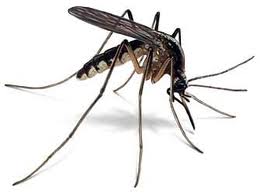With mosquitoes, you may only see one, but that one is not alone. The outdoor bug zappers and regular lighting of citronella candles may help keep them at bay. However, these common summer bugs may continue to flourish on your property and leave you with itchy red marks, despite any of your protective measures. Don’t suffer through another mosquito infestation this year! For residents within Eliminate ‘Em’s service area, then our mosquito control services can help you reclaim your outdoor space and protect your loved ones and pets against the health dangers associated with this annoying pest. For others, then learning about the causes and dangers of mosquito infestations will help with finding a quality pest control expert in your area.
4 Potential Reasons for a Mosquito Infestation
Mosquitoes may be drawn to your property for a number of reasons, and these reasons may even vary slightly from year to year. For example, the EPA notes that the higher temperatures in recent years related to climate change correlate to an increase in the mosquito population, number of bites, and potential exposure to the West Nile virus that mosquitoes often carry. To help, the following highligths some additional reasons that you may experience a mosquito infestation.
1. Water and Moisture
The standing water in your yard or that full birdbath in your garden are popular places for mosquitoes to lay their eggs. Once those eggs hatch, that same water becomes the food supply for the new mosquitoes who then lay their own batch of eggs there, and the cycle continues. While these containers of water may be some of the starting points for a mosquito infestation, other sources of moisture, like the ones below, may also attract mosquitoes.
- Piles of rotting wood, leaves and other yard clippings
- Over-watered plants that result in pools forming around the garden beds
- Automatic sprinkler systems
- The saucers for potted plants
- Unemptied wading pools
- Trash cans, recycling bins and dumpsters that have moisture from waste or water accumulated from a rainstorm
While these outside sources may be a key contributor to a current mosquito infestation, moisture inside the home may also make these areas prime locations for mosquito nests. Stay vigilant about water-oriented features like the ones below to ensure that they do not lead to a mosquito problem.
- Floor drains commonly found in the laundry room or basement
- Shower drains
- Sump pumps
- Drip pans near dehumidifiers, air conditioners and refrigerators
- Leaky faucets or pipes or buckets under drains
- Pet dishes
- Indoor potted plants
2. Increase in Mosquito Population
In general, mosquito populations ebb and flow. Their activity is typically the greatest during the warmer months and crests through late summer or early fall. In addition to the temperature, weather conditions may impact the potential for a mosquito infestation. If your area experiences regular, heavy rain or periodic flooding, expect to see more mosquitoes. Especially during these circumstances, proactively reduce collections of stagnant water and moisture around your property. Regularly scheduling preventative measures and other maintenance executed by the pest control providers near you can further help guard against these unwanted intruders and many others.
3. Untrimmed Vegetation
During the day, a home’s overgrown lawn and shrubbery can look very inviting to any mosquitoes looking for places to hide and dry out. Without the appropriate trimming or mowing, mosquitoes can congregate in these places until they sense another person or animal. As a precautionary measure, make sure that your grass is no more than 3 inches high and neatly prune bushes or other plants to help deter a mosquito infestation.
4. Cracks & Other Entry Points in Your House
As with other pests like ants or mice, even small cracks provide a gateway for mosquitoes to enter your home and cause many potential issues. In addition to asking your local mosquito extermination team about any exclusion and sealing services that they offer, the steps below can help you safeguard your home.
- Screens: Enjoy the flow of cool air without mosquito bites by making sure to repair any holes in your screens. If you have some screens with larger mesh that easily lets these pests inside, exchange it for a smaller mesh design. To guard against mosquito infestations, choose a bug-blocking option with 18 x 18 strands per inch.
- Doors and Windows: Small cracks and places where the door or window doesn’t quite meet the frame are easy entry points for mosquitoes. Along with your screens, check that your windows and doors have tight, complete seals with no cracks around the edges.
- Garage: On days when you have the garage door open, mosquitoes may enter to seek shelter and end up staying there. Help prevent an outside mosquito infestation from becoming an indoor issue by keeping the garage door closed as much as possible.
Common Questions About Mosquito Infestations
Are there any specific times of day or weather conditions that exacerbate mosquito activity around homes?
Mosquitoes are typically more active during dawn and dusk, and they prefer warm and humid conditions. So, these times and weather conditions can see an increase in mosquito activity around homes.
Can indoor plants contribute to attracting mosquitoes indoors, and if so, how can this be managed?
Indoor plants can attract mosquitoes if they are overwatered, creating a moist environment favorable for mosquito breeding. To manage this, it’s essential to avoid overwatering plants and ensure proper drainage.
What are the most effective, non-chemical methods for reducing mosquito populations around a home?
For non-chemical mosquito control, methods like installing screens on windows and doors, using fans to disrupt mosquito flight patterns, and removing standing water sources can be very effective in reducing mosquito populations around a home. For more in-depth information, you might want to refer to pest control resources or contact professionals, like Eliminate ‘Em.
Dangers of a Mosquito Infestation
Mosquitoes are annoying, but mosquito infestations can also be incredibly dangerous. In fact, their bites may expose you and your pets to a variety of diseases, including Zika and the West Nile Virus. To avoid these health complications and other potential long-term health consequences, be proactive about your mosquito treatment plan or schedule an annual consultation with your local pest control specialist, like Eliminate ‘Em.
Take back the joy of summer and increase the safety of your outdoor space by involving a professional mosquito exterminator to help prevent an infestation from happening to you. To learn about our mosquito control services or make an appointment, contact Eliminate ‘Em today.




